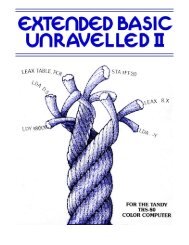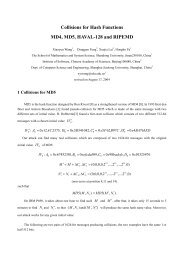sonet 101
sonet 101
sonet 101
You also want an ePaper? Increase the reach of your titles
YUMPU automatically turns print PDFs into web optimized ePapers that Google loves.
What are the Benefits of SONET?<br />
DSX-3<br />
DSX-1<br />
DSX-3<br />
FOTS<br />
A<br />
M13<br />
Mux<br />
M13<br />
Mux<br />
FOTS<br />
C<br />
Some DS-1s<br />
Dropped / Inserted<br />
Existing Asynchronous Systems<br />
SONET<br />
Add / Drop<br />
32<br />
DSX-1<br />
Only DS-1s / DS-3s /<br />
STS-1s that are added /<br />
dropped need to be<br />
multiplexed /<br />
demultiplexed<br />
SONET System<br />
Figure 3-4 • Reduction of Back-to-Back Multiplexing<br />
REDUCED CABLING AND ELIMINATION OF DSX PANELS<br />
Asynchronous systems are dominated by back-to-back terminals because the<br />
asynchronous FOTS architecture is inefficient for other than point-to-point<br />
networks. (See Figure 3-5.) Excessive multiplexing and demultiplexing are used<br />
to transport a signal from one end to another, and many bays of DSX-1 crossconnect<br />
and DSX-3 panels are required to interconnect the systems. Associated<br />
expenses are the panel, bays, cabling, the labor installation, and the inconveniences<br />
of increased floor space and congested cable racks.<br />
The corresponding SONET system allows a hub configuration, reducing the<br />
need for back-to-back terminals. Grooming is performed electronically so DSX<br />
panels are not used except when required to interface with existing asynchronous<br />
equipment.






